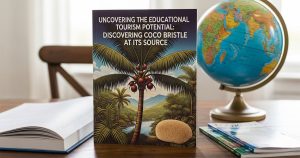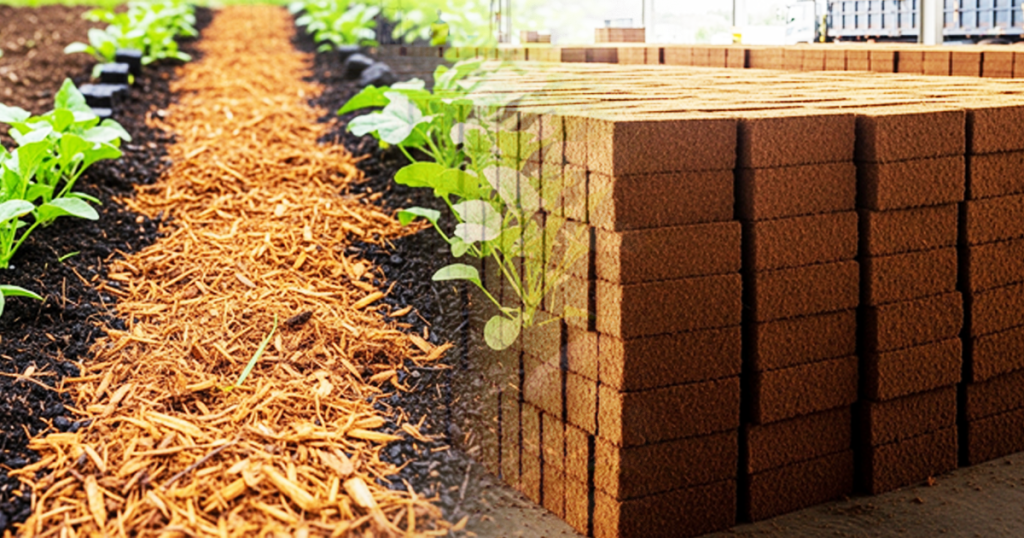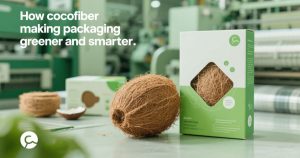The Rise of Sustainable Materials in Packaging
In recent years, the packaging industry has experienced a tectonic shift. The demand for sustainable, biodegradable, and eco-conscious materials is no longer a niche concern it’s a global priority.
Amidst this green transition, coco fiber a natural byproduct of coconut husks is emerging as a formidable alternative to conventional packaging materials like plastic and styrofoam.
As a researcher specializing in cocopeat and its industrial applications, I have closely followed the evolution of coco fiber in various sectors. What was once regarded as agricultural waste is now at the forefront of sustainable packaging innovation.
What Is Coco Fiber?
Coco fiber, or coir, is extracted from the outer husk of the coconut. Traditionally used for making ropes, mats, and brushes, this fibrous material is tough, resilient, and surprisingly versatile.
It is 100% biodegradable, compostable, and has a neutral pH, making it an ideal candidate for eco-friendly packaging.
What makes coco fiber particularly compelling for packaging applications is its structural strength and breathability. These qualities not only reduce waste but also enhance the shelf life of perishable goods.
Environmental Benefits of Coco Fiber Packaging
Reducing Carbon Footprint
Coco fiber requires minimal processing compared to plastic. It does not involve high-energy polymerization or chemical additives, resulting in a significantly lower carbon footprint during production.
Moreover, coconuts are abundantly available in tropical regions and often regrow annually, ensuring a renewable and sustainable supply chain.
Biodegradability and Compostability
Unlike plastic, which can take up to 500 years to decompose, coco fiber breaks down naturally within a few months under composting conditions. This reduces landfill buildup and lowers the environmental burden of waste disposal.
In industrial composting environments, coco fiber packaging can be returned to the soil, enriching it with organic matter and nutrients essentially completing a natural life cycle.
Smart Packaging With a Natural Edge
Temperature and Moisture Regulation
Recent developments in smart packaging have integrated sensors and natural insulators to monitor food freshness, moisture levels, and temperature.
Interestingly, coco fiber has shown potential as a passive insulator, especially in the transport of fresh produce and pharmaceuticals.
Its ability to regulate humidity and maintain a stable temperature helps in reducing spoilage and energy consumption.
Combining Tradition with Technology
Some packaging innovators are combining coco fiber with biodegradable polymers or using it as a matrix for embedded sensors, creating intelligent packaging solutions that are both sustainable and functional.
These hybrids can detect spoilage or even track the package’s journey using biodegradable RFID tags.
Industrial Applications and Economic Opportunities
Countries with high coconut production such as Indonesia, the Philippines, and India are beginning to invest in processing technologies that convert husk waste into packaging products.
This shift is creating local employment opportunities while also addressing the global waste crisis.
Moreover, small and medium enterprises (SMEs) are finding a new revenue stream in transforming what was once a waste product into high-demand packaging goods.
Challenges and Future Research
While the promise of coco fiber packaging is compelling, challenges remain. The standardization of material quality, moisture resistance under extreme conditions, and scalability are ongoing research concerns.
My current focus involves testing coco fiber composites under variable environmental conditions to better understand their long-term durability.
Further collaboration between agricultural scientists, materials engineers, and packaging designers is crucial to unlock the full potential of this material.








